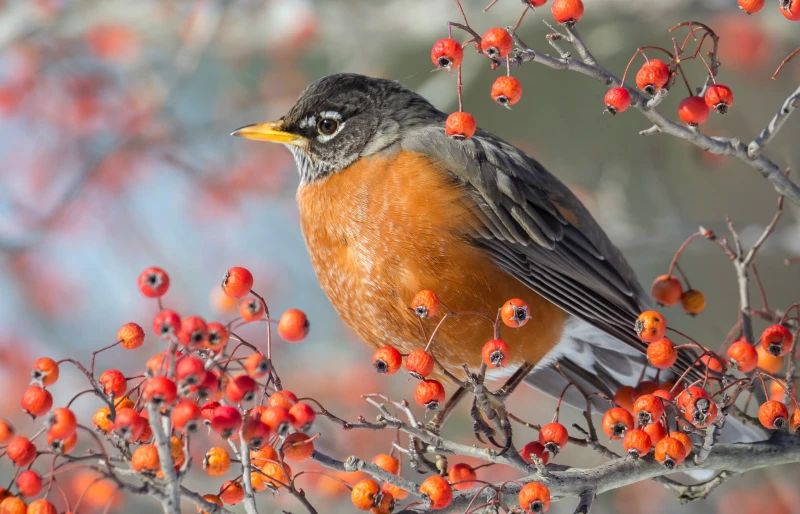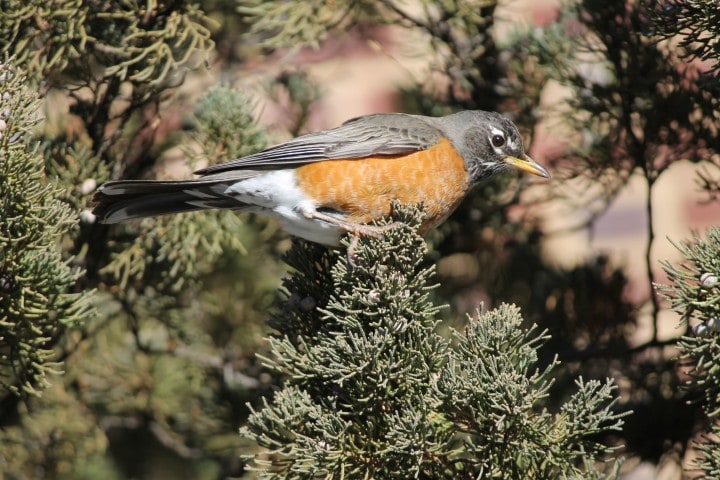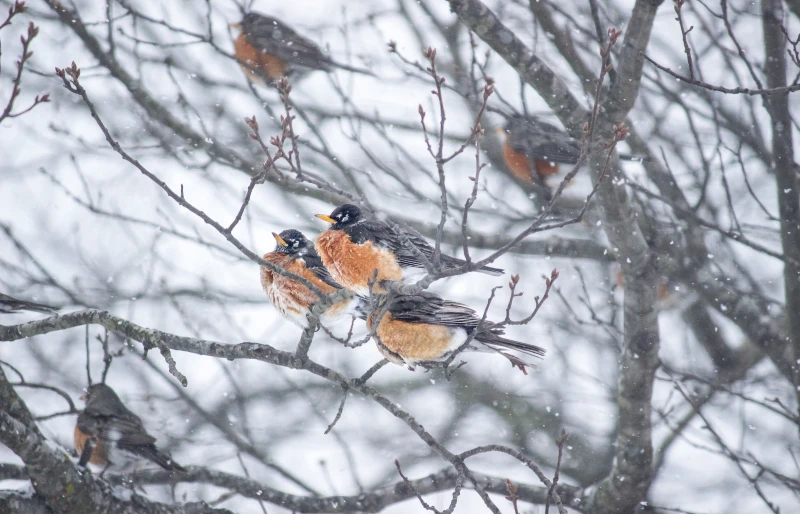Why Are There So Many Robins in My Yard? 4 Likely Reasons
-
Pete Ortiz
- Last updated:

As a community, robins are part of the thrush family—a family that comprises small to medium-sized passerines that like to sing very early in the morning, before the sun rises. So far, we’ve recorded three types of robins in North America. However, the White-throated Robin and the Rufous-backed Robin are not as common as the American Robin.
Robins are normally affected by changes in weather the same way other species are. But owing to the fact that they are highly adaptable to such changes, they rarely migrate. Robins will only migrate if their natural food stores are running low, or if predators have suddenly invaded their territories to hunt what’s left of them as food.
If you’ve noticed many robins are frequently paying you a visit, one of the following could be the reason.
The 4 Reasons Why Robins Are Crowding Your Yard
1. Food Availability
Robins are omnivores. By definition, an omnivore is a species that doesn’t discriminate when it comes to the type of food it consumes. It can comfortably survive on plants or animals, as long as it gets the energy and nutrients required to sustain its body’s metabolic reactions.
Robins like to eat small invertebrates like earthworms, mealworms, roundworms, grasshoppers, caterpillars, and other insects. But during winter, the freezing cold makes hunting difficult. To conserve energy, they always settle for fruits such as crabapple, cherry, viburnum, blackberries, raspberries, serviceberries, mulberries, and several other types of berries.
The berries are also an important food source for these birds, as they are rich in vitamins, antioxidants, fiber, calcium, and phosphorus.
2. Presence of Leafy Trees & Shrubs
Similar to humans, birds also exude psychological reactions such as the “fight or flight” response to certain events that they’d perceive to be frightening or stressful. And based on such reactions, we usually classify them into two groups—those that fight back any time a predator’s trying to make a meal out of them, and those that run to hide.
Because size is a significant factor in determining how strong a species is in the animal kingdom, smaller birds like the robin tend to fall in the latter group. They’ll seek refuge in leafy trees that can offer camouflage or hide in shrubs. So, if your yard has several trees and shrubs, it’s probably their safe haven.

3. It’s Nesting Season
Naturally, birds know it’s quite easy to prey on them during their nesting season. Therefore, to reduce the risk of predation, they’ll revisit the trees that offered better camouflage when they were on the run.
Robins like to build nests on spruce and pine trees, to not only protect themselves but also to hide their eggs. Ornithologists have already established that the squirrel, snake, crow, and blue jay are the prime predators who actively hunt robins for their eggs.
4. Your Yard Is a Refueling Station
There’s a chance that the robins are treating your yard as a refueling station to maintain their energy stores—researchers often call it hyperphagia. These birds are intelligent enough to anticipate heightened energy demand on their journey to warmer regions, especially when crossing urban settlements.
They know they cannot afford to risk flying over unfamiliar territories in a weak state, as that leaves them more vulnerable to predators looking to take advantage of their travel fatigue.

Are Robins Friendly?
Robins are one of the friendliest birds that we know. They only become aggressive towards other birds or animals if they feel threatened in any way, or if their spaces are invaded. If you’d like to lure more robins to your yard, install bird feeders during the cold months. If you can’t procure good feeders, just scatter a variety of seeds around your yard or plant some berries.
How Intelligent Are Robins?
Well, they are intelligent enough to distinguish humans from other animals. Ornithologists believe this species can easily recognize our facial features and study our movements. They are always curious to know what we’re up to, and whether or not we can provide food.

Interesting Facts About Robins
- Robins like to use millipedes and ants as some sort of insecticide. Ants and millipedes are one of the many invertebrates that often release defensive chemical weapons to protect themselves against predators. Robins know this, so they’ll grab some and rub those chemicals on their bodies to get rid of any tick or mite.
- The robin’s breast is not actually red but orange. Before the 16th century, orange wasn’t a recognized color in the English language. It became a known color when the fruit was finally imported to Europe.
- Unlike most bird populations, that of the robin is steadily on the rise. We only experienced a slight dip in the period between 2008 and 2012, but that was due to the extreme temperatures of winter.
- It’s difficult for a Robin to control its anger when wronged. They’ll not only attack their family members but also dead birds.
- The robin loves to sing. They’ll even organize a duet to try to create a masterpiece. The males are known to be more competitive in comparison to their female counterparts.
- In the 17th century, people gave birds human names. For example, the Magpie was previously known as Magaret Pie, and the Wren used to be called Jenny Wren. The robin also had a human name, and it was Robert Red Breast.
- Robins don’t usually exhibit obvious sexual dimorphism. That’s why it’s hard to differentiate the two sexes. But in general, the males tend to be heavier and a little bit bigger than the females. The only time that the female outweighs the male is during their breeding season. If she’s carrying eggs.
Final Thoughts
Food is normally the main reason why robins flock to an area out of nowhere. No animal likes to starve, especially during winter. If they are not there for food, they are probably running from something and your backyard trees are certainly providing cover. Even if they are not hiding from something, your trees are likely being used as a nesting ground.
Featured Image Credit: Donald Healy, Unsplash
Contents



